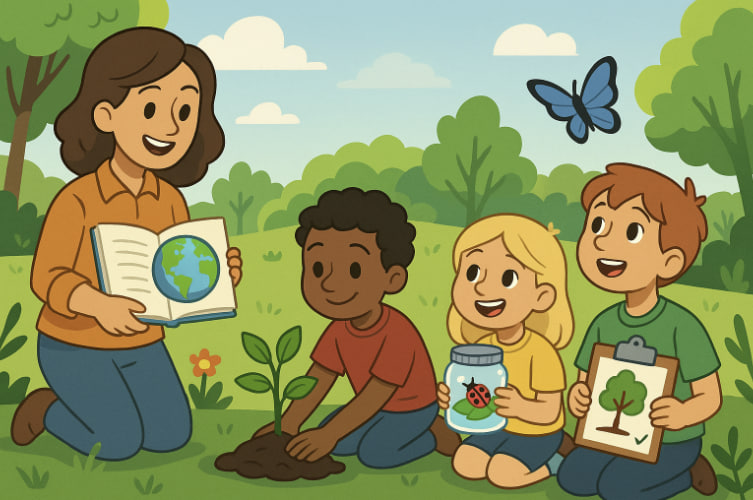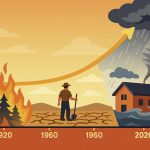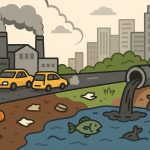In a world facing climate change, biodiversity loss, and pollution, teaching the next generation to care for the environment is more important than ever. Environmental education helps children understand their connection to the planet and inspires them to protect it. But how can we explain complex ecological concepts in a way that children truly understand and value? This article explores how to raise environmentally aware children through engaging, age-appropriate education.
Why Teach Kids About Nature?
Children are naturally curious about the world around them. Environmental education builds on this curiosity to:
- Foster respect and empathy for all living things
- Encourage responsibility and conscious decision-making
- Build awareness of how daily actions impact the planet
- Inspire lifelong environmental stewardship
Studies show that children who spend time in nature develop better emotional health, stronger focus, and a greater sense of responsibility toward others and the environment.
Core Lessons Children Should Learn
1. Everything in Nature Is Connected
Teach that:
- Plants, animals, water, and people form a web of life
- Removing one part affects the whole system
- Even small actions — like picking up trash — matter
2. Resources Are Finite
Explain:
- Water, clean air, and forests are not unlimited
- We must use resources wisely to leave enough for others
3. Pollution Hurts Everyone
Help children see:
- Litter and chemicals pollute rivers, soil, and oceans
- Plastic harms animals and ends up in our food chain
- Simple habits like recycling or using reusable bottles make a difference
4. Climate Change Affects Their Future
In an age-appropriate way:
- Talk about rising temperatures, melting ice, and extreme weather
- Emphasize that people can solve problems by working together
Practical Ways to Teach Children About Nature
Hands-On Activities
- Start a garden or grow a plant from seed
- Visit a local forest, lake, or nature reserve
- Go on a “bug safari” or leaf-collecting walk
- Clean up a park or beach together
Books and Stories
- Read children’s books about animals, ecosystems, or environmental heroes
- Use storytelling to create emotional connection with nature
Simple Science Experiments
- Show how plants absorb water with colored dye
- Make a compost jar to observe decomposition
- Build a DIY bird feeder or insect hotel
Creative Expression
- Draw endangered animals or make recycled art
- Write poems or songs about the Earth
- Create posters on “how to save the planet”
Daily Conversations
- Talk about where food, water, and electricity come from
- Discuss why we turn off lights, walk instead of drive, or sort trash
- Ask open-ended questions like: “What would you do if the ocean disappeared?”
Adapting by Age Group
| Age Group | Teaching Focus |
|---|---|
| 3–6 years | Colors, animals, basic recycling, feelings |
| 7–10 years | Life cycles, pollution, simple solutions |
| 11–14 years | Climate change, ecosystems, activism |
| 15+ years | Policy, science, innovation, leadership |
Always tailor the message to the child’s level of understanding — and emphasize hope and empowerment, not fear.
Role Modeling: Parents and Educators Matter
Children learn best by example. Adults can:
- Practice sustainable habits (e.g., reduce plastic, bike more)
- Share joy and wonder about the natural world
- Be open about learning together, even as grownups
Conclusion
Teaching children to care about nature isn’t just about knowledge — it’s about nurturing a relationship with the Earth. When kids understand how deeply we depend on nature, they are more likely to protect it. With creativity, patience, and love for the planet, we can raise a generation that leads with care and sustainability.
Glossary
- Environmental education – teaching about nature and how to protect it
- Web of life – the way all living things are connected in ecosystems
- Biodiversity – the variety of life forms on Earth
- Stewardship – taking care of something that’s valuable, like nature
- Pollution – harmful substances released into the environment


